However you may have been observing the past six weeks of penitence, Easter is now steaming into port with the pilot onboard and will be here in three days.
Special Spring Bonus: Click here (11042001) if you would like to hear a small soundtrack of the blackbird chorus outside the window every morning before dawn.
Older Venetians remember a bit of rhyming versification which highlighted each Sunday of Lent by attaching it to one of the miracles of Jesus.
I have no information whatever on how this started, who came up with it, or anything else other than its now-fading existence. By doing some random research (fancy way of saying “asking around”), I discover that children are no longer taught this bit of lore. In fact, so far I haven’t been able to nab anyone of any age in this neighborhood who’s ever heard of it, so perhaps it’s a relic of life in long-ago Dorsoduro.
Therefore this missive may be one of the few places to acknowledge this fragment of tradition before the last traces are gone.
It goes like this: Uta, Muta, Cananela/Pane e Pesce, Lazarela/ Oliva/Pasqua Fioriva.
It is pronounced: OO-ta, MOO-ta, Canna-NAY-a/ PAN-eh eh PEH-sheh, YA-za-RAY-ah/oh-YEE-va/PAS-kwa fyoh-REE-va.
The significance of these gnomic utterances is as follows:
Uta: I don’t know. This is a bad start, but I am still researching this curious word by means of any elderly Venetians and/or priests I can find. It hasn’t been easy, which only proves that this verseology is on its last legs. Perhaps “uta” refers to one of the many healing miracles: bleeding, or blindness, or demon-possession, or paralysis, or dropsy. You can take your pick until further notice.
Muta: The healing of the man mute from birth (Mark 7: 31-37).
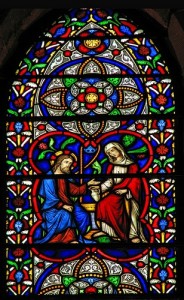
Cananela: My sainted sister-in-law (age 82) maintains that this refers to the meeting of Jesus with the Samaritan woman at Jacob’s well (John 4: 4-26). She is very firm on that, even though it wasn’t technically a miracle, but seeing as the reading for the Third Sunday is, in fact, that passage, I think we can consider the matter settled.
Pane e Pesce: “Bread and fish,” clearly a reference to the Feeding of the Multitude (Matthew 14: 13-21; Mark 6: 31-44; Luke 9: 10-17; John 6: 5-15; Mark 8: 1-9; Matthew 15: 32-39).
Lazarela: The resurrection of Lazarus (John 11: 1-46). Makes a nice rhyme. Also worth remembering for its own self.
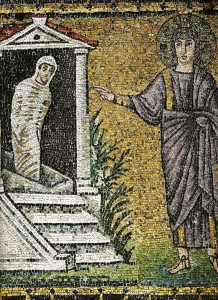
Oliva: “Olive.” Although here, as in many other places, they call the Sunday before Easter “Palm Sunday” (Mark 11: 1-11; Matthew 21: 1-11; Luke 19: 28-44; John 12: 12-19), or “Domenica delle Palme,” the fronds distributed in church aren’t palm, but olive. This is very lovely, considering the ancient link between the olive branch and peace, and the various Gospel accounts only agree on the fact that clothes were spread on the ground before Jesus’ feet. Obviously nobody has ever thought of calling it “Clothes Sunday,” so I’m just going to leave that alone. We get olive twigs, take it or leave it. In Latvia they use pussy willows.
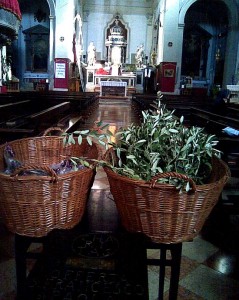
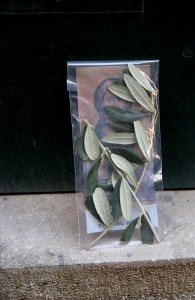
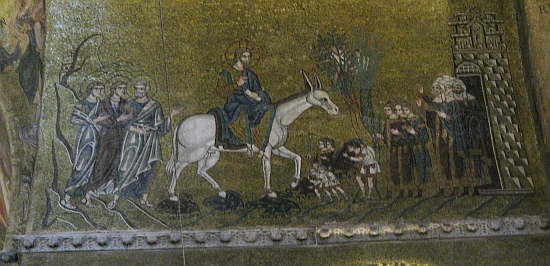
A central arch in the basilica of San Marco shows the most concise illustrations imaginable of the Easter story, from trial to crucifixion. In the center is the crowning moment, without which there would be no Easter: The empty tomb. - Pasqua Fioriva: “Easter Bloomed.” That certainly needs no exegesis. (Matthew 27: 27-56; Luke 23: 26-49; John 19: 16-37).
A bit of meteorological magic holds that “Se piove sulle olive/ Non piove sui vovi” (If it rains on the olives, it won’t rain on the eggs). Meaning that if it rains on Palm (excuse me, Olive) Sunday, it won’t rain on Easter. Much as it distresses me to give any credence to this sort of thing, I have seen it turn out to be true something like 95 percent of the time. I can’t explain it.

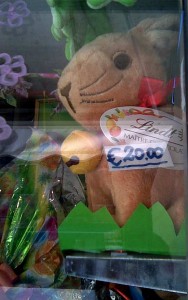
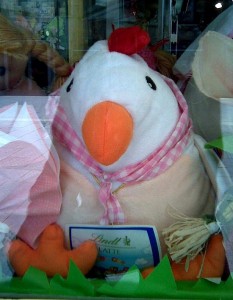
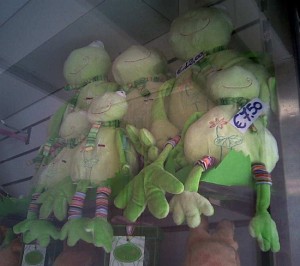


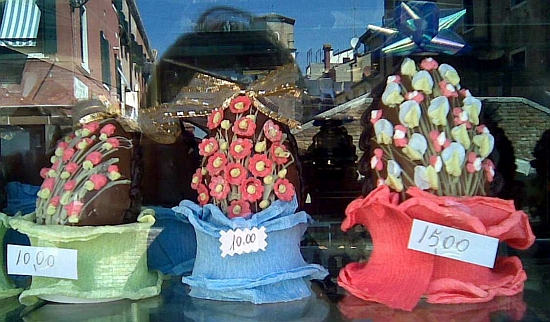

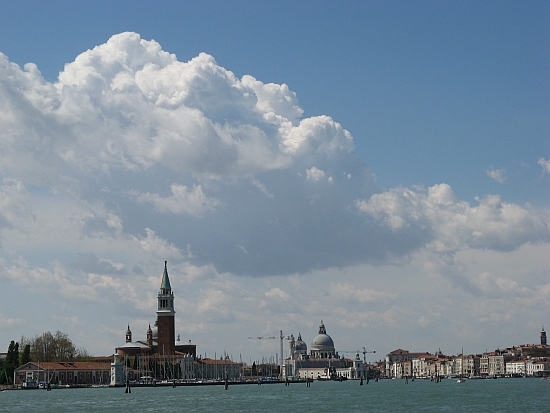

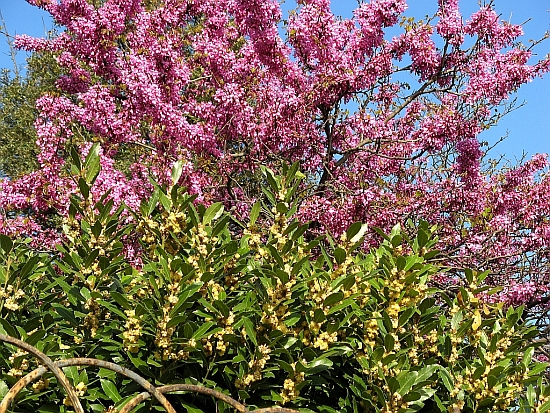
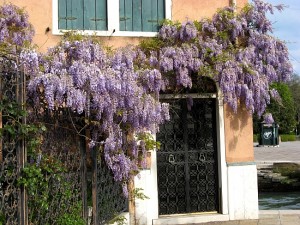
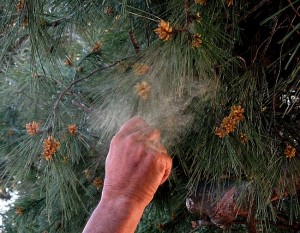

3 Comments
Olive branches!!! I’m utterly surprised. In Poland as well as Austria we use pussy willows, so I’ve always thought that pussy willows are used everywhere, and never came up with the slightest idea that it might be different.
And so – what do you use in America, if not pussy willows? 🙂
We use palms. Long slender palm leaves, usually, which are often folded into simple crosses later on.
Sounds nice and exotic to me!
The more I learn about other places, the more I wonder how very similar most customs in Poland and Austria actually are.
Might be due to the fact that there is a serious lack of palm AND olive trees in both countries 😉